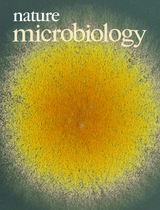Yu et al., 2016
Fungi use the SakA (HogA) pathway for phytochrome-dependent light signalling
Abstract
Stress-sensing in fungi depends on a signalling cascade comprised of a two-component phosphorylation relay plus a subsequent MAP kinase cascade to trigger gene expression. Besides osmotic or oxidative stress, fungi sense many other environmental factors, one of which is light. Light controls morphogenetic pathways but also the production of secondary metabolites such as penicillin. Here we show that phytochrome-dependent light signalling in Aspergillus nidulans involves the stress-sensing and osmosensing signalling pathway. In a screening for ‘blind’ mutants, the MAP kinase SakA (also known as HogA) was identified by whole-genome sequencing. The phytochrome FphA physically interacted with the histidine-containing phosphotransfer protein YpdA and caused light-dependent phosphorylation of the MAP kinase SakA and its shuttling into nuclei. In the absence of phytochrome, SakA still responded to osmotic stress but not to light. The SakA pathway thus integrates several stress factors and can be considered to be a hub for environmental signals.


